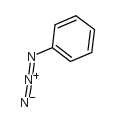Photochemical fishing approaches for identifying target proteins and elucidating the structure of a ligand-binding region using carbene-generating photoreactive probes.
Yutaka Sadakane, Yasumaru Hatanaka
Index: Anal. Sci. 22(2) , 209-18, (2006)
Full Text: HTML
Abstract
Photoaffinity labeling enables the direct probing of a target protein through a covalent bond between a ligand and its binding protein, and even a complex formed by weak interactions can be isolated by the method. The photochemical fishing approach accelerates the throughput, isolating crosslinked complexes and analyzing the structure of the ligand binding site within the protein. We used carbene-generating phenyldiazirine for this approach because practical examinations had shown that the phenyldiazirine functioned as the powerful barb on the hook. Improving the synthetic pathways of the photoprobes and using chemoselective-integrated photoreactive units makes possible the easy and rapid preparation of carbene-generating photoreactive probes including the derivatives in peptides, proteins, DNAs, and carbohydrates. This review also shows several recent impacts of photoaffinity labeling, including the in vivo preparation of photoreactive proteins in living cells.
Related Compounds
| Structure | Name/CAS No. | Molecular Formula | Articles |
|---|---|---|---|
 |
Benzene, azido-
CAS:622-37-7 |
C6H5N3 |
|
Regioselective Sequential Modification of Chitosan via Azide...
2015-01-01 [PLoS ONE 10 , e0123084, (2015)] |
|
An automated multiplex specific IgE assay system using a pho...
2012-11-15 [J. Biotechnol. 161(4) , 414-21, (2012)] |
|
Inhibition of monoamine oxidase by phenyl azides.
1985-09-01 [J. Neurochem. 45(3) , 940-5, (1985)] |
|
Probing the active site of a diels-alderase ribozyme by phot...
2008-07-09 [J. Am. Chem. Soc. 130(27) , 8594-5, (2008)] |
|
An ultrafast study of phenyl azide: the direct observation o...
2007-09-27 [Org. Lett. 9(20) , 3973-6, (2007)] |